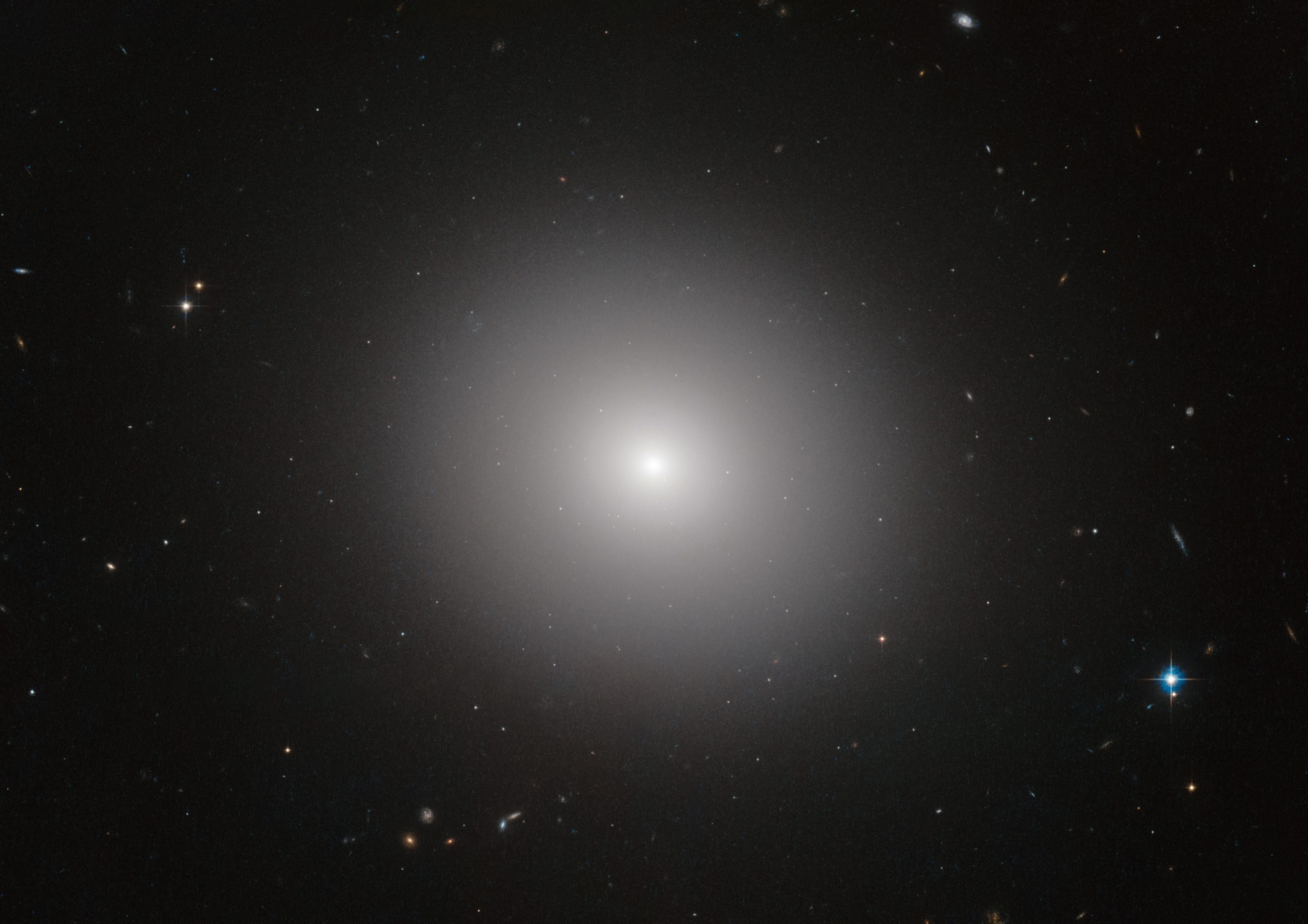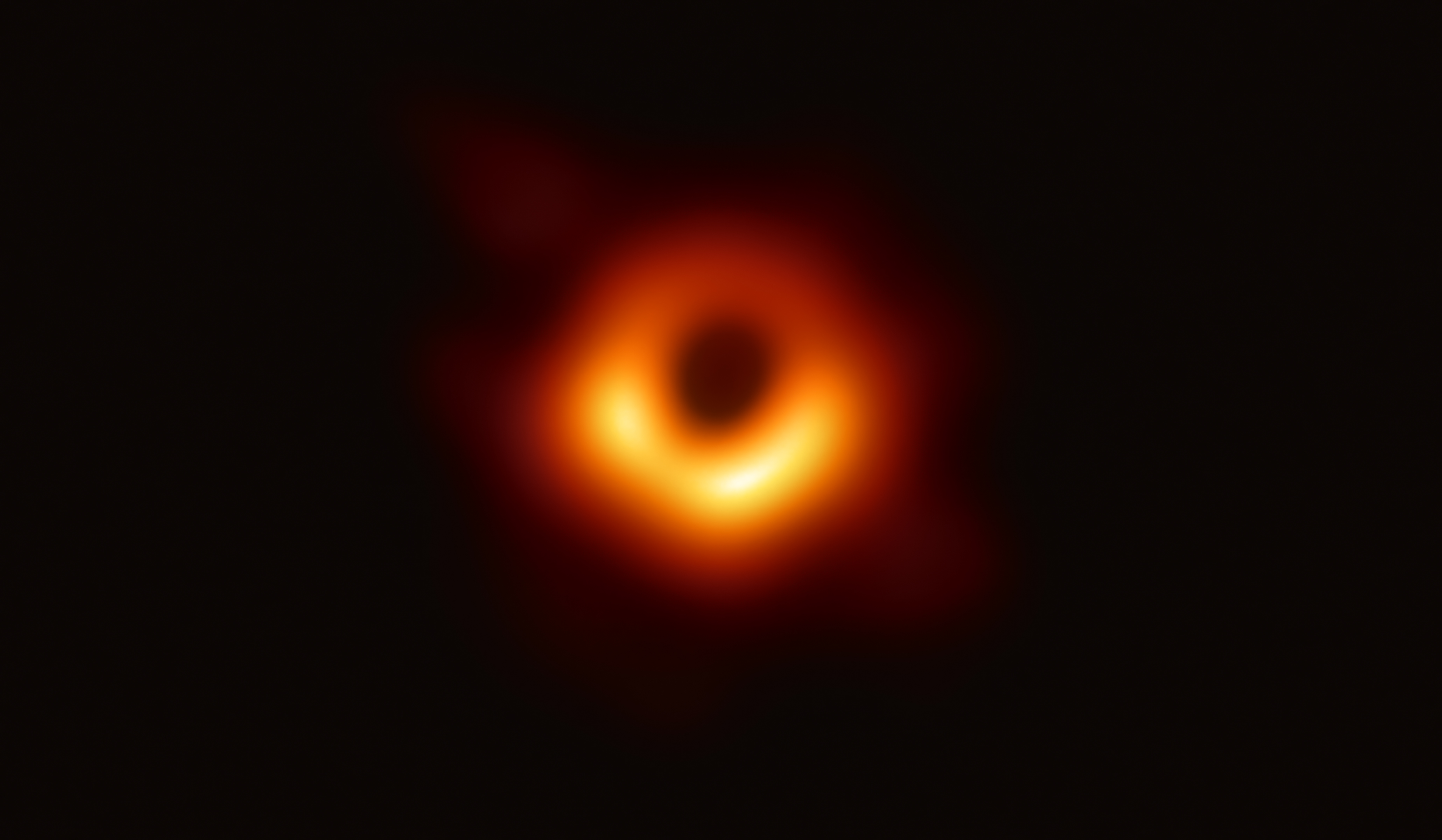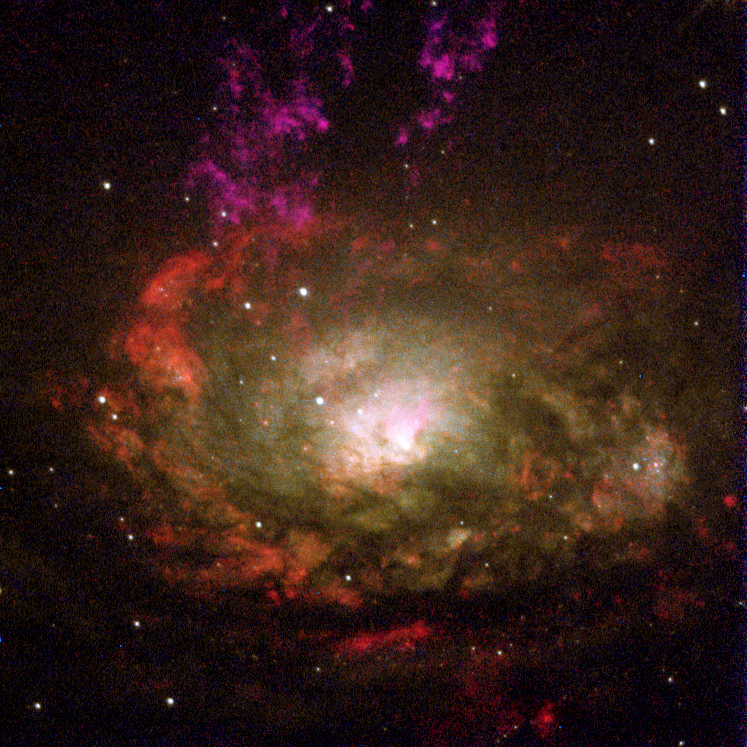|
NGC 4636
NGC 4636 is an elliptical galaxy located in the constellation Virgo. It is a member of the NGC 4753 Group of galaxies, which is a member of the Virgo II Groups, a series of galaxies and galaxy clusters strung out from the southern edge of the Virgo Supercluster. It is located at a distance of about 55 million light years from Earth, which, given its apparent dimensions, means that NGC 4636 is about 105,000 light years across. It was discovered by William Herschel on February 23, 1784. NGC 4636 lies one and a half degrees southwest of Delta Virginis. It can be viewed through a telescope at a ×23 magnification as a bright oval glow. It is part of the Herschel 400 Catalogue. Characteristics The central part of NGC 4636 is circular and is surrounded by an elongated fainter envelope, containing a large number of globular clusters.Sandage, A., Bedke, J. (1994), ''The Carnegie Atlas of Galaxies. Volume I'', Carnegie Institution of Washington The galaxy has an active galactic nucleus ... [...More Info...] [...Related Items...] OR: [Wikipedia] [Google] [Baidu] |
New General Catalogue
The ''New General Catalogue of Nebulae and Clusters of Stars'' (abbreviated NGC) is an astronomical catalog, astronomical catalogue of deep-sky objects compiled by John Louis Emil Dreyer in 1888. The NGC contains 7,840 objects, including galaxy, galaxies, star clusters and emission nebulae. Dreyer published two supplements to the NGC in 1895 and 1908, known as the ''Index Catalogues'' (abbreviated IC), describing a further 5,386 astronomical objects. Thousands of these objects are best known by their NGC or IC numbers, which remain in widespread use. The NGC expanded and consolidated the cataloguing work of William Herschel, William and Caroline Herschel, and John Herschel's ''General Catalogue of Nebulae and Clusters of Stars''. Objects south of the Celestial sphere, celestial equator are catalogued somewhat less thoroughly, but many were included based on observation by John Herschel or James Dunlop. The NGC contained multiple errors, but attempts to eliminate them were made by ... [...More Info...] [...Related Items...] OR: [Wikipedia] [Google] [Baidu] |
Elliptical Galaxy
An elliptical galaxy is a type of galaxy with an approximately ellipsoidal shape and a smooth, nearly featureless image. They are one of the four main classes of galaxy described by Edwin Hubble in his Hubble sequence and 1936 work ''The Realm of the Nebulae'', with their intermediate scale disks, a subset of the "early-type" galaxy population. Most elliptical galaxies are composed of older, low-mass stars, with a sparse interstellar medium and minimal star formation activity, and they tend to be surrounded by large numbers of globular clusters. Elliptical galaxies are believed to make up approximately 10–15% of galaxies in the Virgo Supercluster, and they are not the dominant type of galaxy in the universe overall. They are preferentially found close to the centers of galaxy clusters. Elliptical galaxies range in size from dwarf ellipticals with tens of millions of stars, to supergiants of over one hundred trillion stars that dominate their galaxy clusters. Originall ... [...More Info...] [...Related Items...] OR: [Wikipedia] [Google] [Baidu] |
Supermassive Black Hole
A supermassive black hole (SMBH or sometimes SBH) is the largest type of black hole, with its mass being on the order of hundreds of thousands, or millions to billions of times the mass of the Sun (). Black holes are a class of astronomical objects that have undergone gravitational collapse, leaving behind spheroidal regions of space from which nothing can escape, not even light. Observational evidence indicates that almost every large galaxy has a supermassive black hole at its center. For example, the Milky Way has a supermassive black hole in its Galactic Center, corresponding to the radio source Sagittarius A*. Accretion of interstellar gas onto supermassive black holes is the process responsible for powering active galactic nuclei (AGNs) and quasars. Two supermassive black holes have been directly imaged by the Event Horizon Telescope: the black hole in the giant elliptical galaxy Messier 87 and the black hole at the Milky Way’s center. Description Supermassive black ... [...More Info...] [...Related Items...] OR: [Wikipedia] [Google] [Baidu] |
Seyfert Galaxy
Seyfert galaxies are one of the two largest groups of active galaxies, along with quasars. They have quasar-like nuclei (very luminous, distant and bright sources of electromagnetic radiation) with very high surface brightnesses whose spectra reveal strong, high- ionisation emission lines, but unlike quasars, their host galaxies are clearly detectable. Seyfert galaxies account for about 10% of all galaxies and are some of the most intensely studied objects in astronomy, as they are thought to be powered by the same phenomena that occur in quasars, although they are closer and less luminous than quasars. These galaxies have supermassive black holes at their centers which are surrounded by accretion discs of in-falling material. The accretion discs are believed to be the source of the observed ultraviolet radiation. Ultraviolet emission and absorption lines provide the best diagnostics for the composition of the surrounding material. Seen in visible light, most Seyfert galaxie ... [...More Info...] [...Related Items...] OR: [Wikipedia] [Google] [Baidu] |
LINER
A low-ionization nuclear emission-line region (LINER) is a type of galactic nucleus that is defined by its spectral line emission. The spectra typically include line emission from weakly ionized or neutral atoms, such as O, O+, N+, and S+. Conversely, the spectral line emission from strongly ionized atoms, such as O++, Ne++, and He+, is relatively weak. The class of galactic nuclei was first identified by Timothy Heckman in the third of a series of papers on the spectra of galactic nuclei that were published in 1980. Demographics of LINER galaxies Galaxies that contain LINERs are often referred to as ''LINER galaxies''. LINER galaxies are very common; approximately one-third of all nearby galaxies (galaxies within approximately 20-40 Mpc) may be classified as LINER galaxies. Approximately 75% of LINER galaxies are either elliptical galaxies, lenticular galaxies, or S0/a-Sab galaxies (spiral galaxies with large bulges and tightly wound spiral arms). LINERs are fou ... [...More Info...] [...Related Items...] OR: [Wikipedia] [Google] [Baidu] |
Active Galactic Nucleus
An active galactic nucleus (AGN) is a compact region at the center of a galaxy that has a much-higher-than-normal luminosity over at least some portion of the electromagnetic spectrum with characteristics indicating that the luminosity is not produced by stars. Such excess non-stellar emission has been observed in the radio, microwave, infrared, optical, ultra-violet, X-ray and gamma ray wavebands. A galaxy hosting an AGN is called an "active galaxy". The non-stellar radiation from an AGN is theorized to result from the accretion of matter by a supermassive black hole at the center of its host galaxy. Active galactic nuclei are the most luminous persistent sources of electromagnetic radiation in the universe, and as such can be used as a means of discovering distant objects; their evolution as a function of cosmic time also puts constraints on models of the cosmos. The observed characteristics of an AGN depend on several properties such as the mass of the central black ... [...More Info...] [...Related Items...] OR: [Wikipedia] [Google] [Baidu] |
Herschel 400 Catalogue
The Herschel 400 catalogue is a subset of William Herschel, William Herschel's original ''Catalogue of Nebulae and Clusters of Stars'', selected by Brenda F. Guzman (Branchett), Lydel Guzman, Paul Jones, James Morrison, Peggy Taylor and Sara Saey of the Ancient City Astronomy Club in St. Augustine, Florida, United States c. 1980. They decided to generate the list after reading a letter published in Sky and telescope, ''Sky & Telescope'' by James Mullaney of Pittsburgh, Pennsylvania, Pittsburgh, Pennsylvania, USA. In this letter Mr. Mullaney suggested that William Herschel's original catalogue of 2,500 objects would be an excellent basis for deep sky object selection for amateur astronomers looking for a challenge after completing the Messier Catalogue. The Herschel 400 is a subset of John Herschel's ''General Catalogue of Nebulae and Clusters'' published in 1864 of 5,000 objects, and hence also of the ''New General Catalogue''. The catalogue forms the basis of thAstronomical Leagu ... [...More Info...] [...Related Items...] OR: [Wikipedia] [Google] [Baidu] |
Telescope
A telescope is a device used to observe distant objects by their emission, absorption, or reflection of electromagnetic radiation. Originally meaning only an optical instrument using lenses, curved mirrors, or a combination of both to observe distant objects, the word ''telescope'' now refers to a wide range of instruments capable of detecting different regions of the electromagnetic spectrum, and in some cases other types of detectors. The first known practical telescopes were refracting telescopes with glass lenses and were invented in the Netherlands at the beginning of the 17th century. They were used for both terrestrial applications and astronomy. The reflecting telescope, which uses mirrors to collect and focus light, was invented within a few decades of the first refracting telescope. In the 20th century, many new types of telescopes were invented, including radio telescopes in the 1930s and infrared telescopes in the 1960s. Etymology The word ''telescope'' ... [...More Info...] [...Related Items...] OR: [Wikipedia] [Google] [Baidu] |
Delta Virginis
Delta Virginis (δ Virginis, abbreviated Del Vir, δ Vir), formally named Minelauva , is a star in the zodiac constellation of Virgo. With an apparent visual magnitude of 3.4, this star is bright enough to be seen with the naked eye. Based upon parallax measurements, it is located at a distance of about from the Sun. Nomenclature ''δ Virginis'' ( Latinised to ''Delta Virginis'') is the star's Bayer designation. It bore the traditional, medieval names ''Auva'' and ''Minelauva'' from the Arabic من العواء ''min al-ʽawwāʼ'', meaning "in the lunar mansion of ''ʽawwaʼ''" (a name of unknown meaning). In 2016, the IAU organized a Working Group on Star Names (WGSN) to catalog and standardize proper names for stars. The WGSN approved the name ''Minelauva'' for this star on 30 June 2017 and it is now so included in the List of IAU-approved Star Names. This star, along with Beta Virginis (Zavijava), Gamma Virginis (Porrima), Eta Virginis (Zaniah) and Epsilon Virgini ... [...More Info...] [...Related Items...] OR: [Wikipedia] [Google] [Baidu] |
William Herschel
Frederick William Herschel (; german: Friedrich Wilhelm Herschel; 15 November 1738 – 25 August 1822) was a German-born British astronomer and composer. He frequently collaborated with his younger sister and fellow astronomer Caroline Herschel (1750–1848). Born in the Electorate of Hanover, William Herschel followed his father into the military band of Hanover, before emigrating to Great Britain in 1757 at the age of nineteen. Herschel constructed his first large telescope in 1774, after which he spent nine years carrying out sky surveys to investigate double stars. Herschel published catalogues of nebulae in 1802 (2,500 objects) and in 1820 (5,000 objects). The resolving power of the Herschel telescopes revealed that many objects called nebulae in the Messier catalogue were actually clusters of stars. On 13 March 1781 while making observations he made note of a new object in the constellation of Gemini. This would, after several weeks of verification and consulta ... [...More Info...] [...Related Items...] OR: [Wikipedia] [Google] [Baidu] |
Light Year
A light-year, alternatively spelled light year, is a large unit of length used to express astronomical distances and is equivalent to about 9.46 trillion kilometers (), or 5.88 trillion miles ().One trillion here is taken to be 1012 (one million million, or billion in long scale). As defined by the International Astronomical Union (IAU), a light-year is the distance that light travels in a vacuum in one Julian year (365.25 days). Because it includes the time-measurement word "year", the term ''light-year'' is sometimes misinterpreted as a unit of time. The ''light-year'' is most often used when expressing distances to stars and other distances on a galactic scale, especially in non-specialist contexts and popular science publications. The unit most commonly used in professional astronomy is the parsec (symbol: pc, about 3.26 light-years) which derives from astrometry; it is the distance at which one astronomical unit subtends an angle of one second of arc. Defi ... [...More Info...] [...Related Items...] OR: [Wikipedia] [Google] [Baidu] |
Virgo Supercluster
The Virgo Supercluster (Virgo SC) or the Local Supercluster (LSC or LS) is a mass concentration of galaxies containing the Virgo Cluster and Local Group, which itself contains the Milky Way and Andromeda galaxies, as well as others. At least 100 galaxy groups and clusters are located within its diameter of 33 megaparsecs (110 million light-years). The Virgo SC is one of about 10 million superclusters in the observable universe and is in the Pisces–Cetus Supercluster Complex, a galaxy filament. A 2014 study indicates that the Virgo Supercluster is only a lobe of an even greater supercluster, Laniakea, a larger, competing referent of the term Local Supercluster centered on the Great Attractor. Background Beginning with the first large sample of nebulae published by William and John Herschel in 1863, it was known that there is a marked excess of nebular fields in the constellation Virgo (near the north galactic pole). In the 1950s, French–American astronomer Gér ... [...More Info...] [...Related Items...] OR: [Wikipedia] [Google] [Baidu] |










